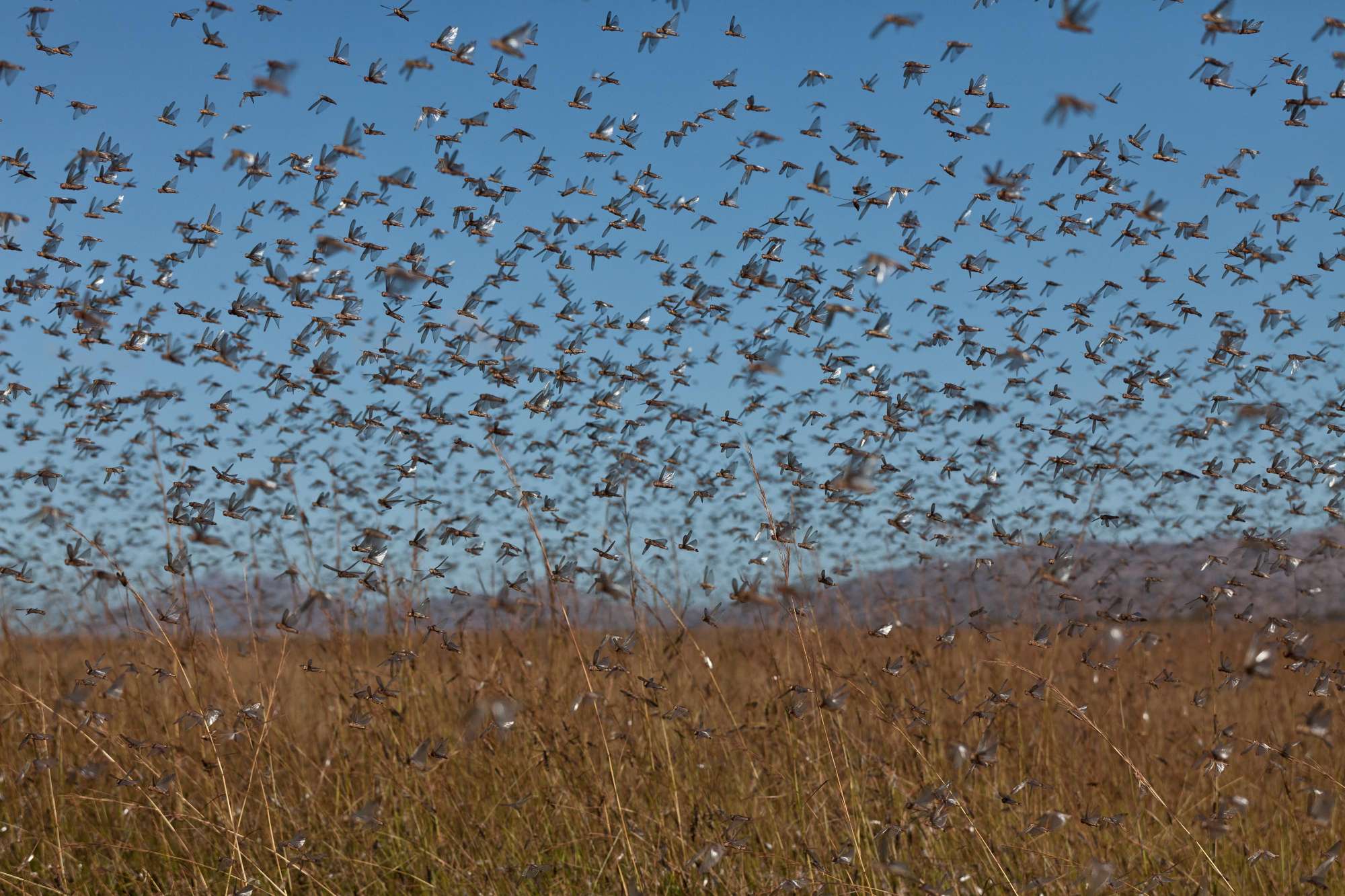
The year 2019 witnessed countries in the Greater Horn of Africa experiencing a serious invasion of desert locusts, the worst in over 70 years. Latest updates from the Food and Agriculture Organization of the United Nations indicate that a massive desert locust upsurge is currently underway in the same region. The invasion has further spread to the Arabian Peninsula and Southwest Asia, with the risk of this spreading to the Sahel region if it’s not contained by July.
There are reports that indicate the locusts have caused up to 100% crop loss in Somalia affecting staple crops of maize and sorghum. In Kenya, up to 30% of pastureland has been lost affecting the livelihoods of the pastoral communities. To imagine the extent of damage, it’s believed that the locusts can travel up to 150 km per day with a swarm covering 1 square kilometer containing 40 to 80 million insects, and because the desert locust consumes its own weight in vegetation every day, a swarm can eat the same amount of food in one day as approximately 35,000 people, posing a serious threat to both crops, grazing land, and hunger.
Control and surveillance operations are being led by national governments of affected countries and the Desert Locust Control Organization for Eastern Africa (DLCO-EA), with FAO providing support in the form of pesticides, biopesticides, equipment, aircraft and training. This support will enable the control of 1 million ha of infested farmland and rangeland, protect the livelihoods of 110,000 households, and assist with providing information and coordination to stakeholders across the region, according to FAO.
Over 365,000 ha have been controlled to date, of which an estimated 20% was infested by hopper bands and 80% by swarms. Control of the locusts became critical in January due to weather conditions that were unusually conducive to the spread of the pest. Cyclone Pawan made landfall in early December 2019, flooding the Horn of Africa, creating favorable breeding conditions for the desert locust. According to experts, prolonged and exceptionally wet weather was the primary culprit, causing hundreds of billions of the locusts, to thrive.
Desert locust is a rare event, and the global stock of control equipment and products is limited. Use of both biopesticides and conventional pesticides pesticides was and continues to be the main method of control of the locusts, particularly the swarms.
Procurement, delivery, internal transport, storage and disposal of unused pesticides is the most difficult part of managing a locust control campaign. According to FAO, this represents half of the total cost of the locust control intervention. The choice of pesticide depends greatly on context and conditions of the area to be treated. Historically this has been the prerogative of FAO.
However, the pesticide industry claims that there have been reports of little involvement and a non-transparent process in procurement, and that there must be dialogue for FAO to open up for new innovations and formulations going forward.
Ultra-low volume (ULV) formulated pesticides are primarily used in the control of locusts. These ULV pesticides reduce the amount of pesticide used and do not require mixing with water as a carrier. Biopesticides are used in the control campaigns in Somalia, and in Kenya and Ethiopia they now being used to manage the hoppers due to mode of action. These are based on a fungus called Metarhizium spp: when the spores come into contact with the locust, they penetrate and multiply inside the insect.
The biopesticides are native and target specifically only infecting desert locusts, making it safe for humans, animals, other insects such as bees, and vegetation, thereby safeguarding the local ecosystem. The challenges associated with biopesticides are shortages of product on the market, lengthy production lines, and above all, slower impact on the pest than conventional pesticides.
According to FAO, the situation remains extremely alarming in East Africa, where it is an unprecedented threat to food security and livelihoods since the timing coincides with the current growing season. FAO predicts the possibility of new swarms from current breeding grounds which will form from mid-June onward, coinciding with the start of the harvest period.
However, reports from the National Locust Control Center points out that the current rains and change in wind direction currently flowing from south to north have pushed locust towards Turkana, Kenya. Presently, there is a risk that swarms will migrate to the summer breeding areas along both sides of the Indo-Pakistan border as well as to Sudan and perhaps West Africa.
Control teams are now focusing on surveillance for the identification, monitoring, and mapping of breeding areas to enable timely control of the second generation. To enable this, five control centers have been established. Control operations require agile coordination, as adult locusts must be controlled early to avoid moving to a vicious cycle. According to the FAO head of control operations, 300 youth have been trained to track and provide coordinates through the eLocust3m program, an Android app that helps to track the location of locusts.
"control" - Google News
June 02, 2020 at 02:58AM
https://ift.tt/2MjoKlg
Desert Locust Control Hindered by Pesticide Procurement - Agribusiness Global
"control" - Google News
https://ift.tt/3bY2j0m
https://ift.tt/2KQD83I
Bagikan Berita Ini
















0 Response to "Desert Locust Control Hindered by Pesticide Procurement - Agribusiness Global"
Post a Comment